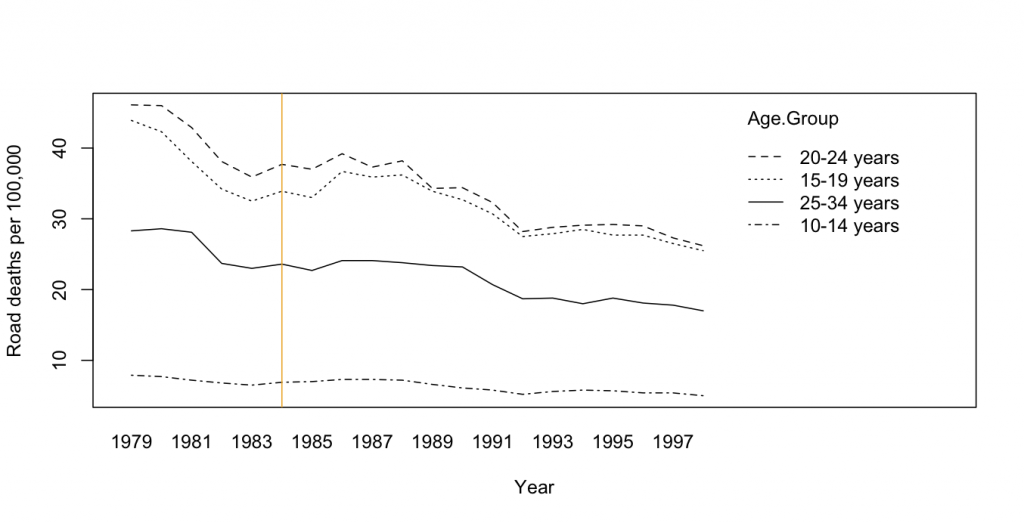US drinking age and road deaths
In an earlier post I looked at male youth suicide rates in the US before and after the drinking age was raised in July 1984, and said that expecting a decrease in road deaths made sense. It does make sense, but it seems that it didn’t happen in the US. The graph shows road deaths per 100,000 people by age group (from CDC), and there isn’t anything prominent that happens in 1984 or 1985. The pattern is pretty much the same for ages 15-19, 20-24, and 25-34. The younger two groups would have been affected by the law (with its supporters usually arguing that the youngest of the groups is the real target) and the oldest group would not have been affected. You can think of all sorts of explanations for why a difference might not have been seen (for example, the US is bad at detecting and deterring drunk drivers), but the data has to be disappointing to people who want a change in the drinking age.

It’s interesting that there hasn’t been any real discussion in the NZ media of what happened when the US raised the drinking age.
Thomas Lumley (@tslumley) is Professor of Biostatistics at the University of Auckland. His research interests include semiparametric models, survey sampling, statistical computing, foundations of statistics, and whatever methodological problems his medical collaborators come up with. He also blogs at Biased and Inefficient See all posts by Thomas Lumley »
[…] Lumley at Stats Chat blogs: In an earlier post I looked at male youth suicide rates in the US before and after the drinking […]
13 years ago
It would be interesting to look at the data by boarder and non-boarder states (of the USA).
One of my collegues was telling me about some research that was conducted on youth in a small, rural boarder town in America. They had a high rate of car accidents for youth there because the kids would go across to Canada to drink (18+ pubs rather than 21+) and then drive home, alcohol-impaired, on snowy, country roads.
12 years ago